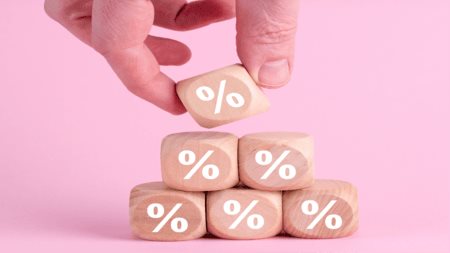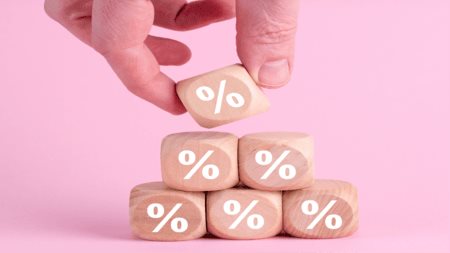SA home buyers and sellers can now access a whole stack of property price statistics, but getting a grip on the market is still pretty much guesswork and gut feel.
What goes up, they say, must come down. And in property, what goes down must also – hopefully – go up. Unfortunately, the nature of the market is that real-estate prices do not all go up or down at the same time or by the same percentage. And an increasing number of market observers are now compiling and publishing different interpretations of price movements – very often from their own perspective and usually using their own samples of the market. This is confusing for ordinary buyers, sellers and investors who are just looking for straightforward answers about whether to buy, sell or hang on. Recently, ABSA put the cat among the pigeons when it appeared to report that the average value of homes in SA was deflating, with small home prices having shown a nominal year-on-year price decline in March of 19,1%, medium home prices a year-on-year decline of 0,6% and large home prices a decline of 0,4 percent. Taking inflation into account, it showed that small home prices had declined in real terms by 22,3% year-on-year in February, medium home prices by 5,6% and large home prices by 4,7%. And Jacques du Toit, ABSA’s Senior Property Analyst, said that these downward trends in average house prices had been evident for some months and that if they continued, nominal and real price deflation for the year as a whole was a strong possibility, implying “another year of dismal price performance by the housing market”.
This was totally at odds with reports from FNB and mortgage originator ooba, both of which have been indicating since about November last year that house prices are on the rise. The trouble is that what ABSA was reporting on was not house prices as a whole, but only the prices of homes for which the bank itself ‘received and approved applications for mortgage finance’ – in other words, only its own new mortgage business.
Is it not possible that the profile of ABSA’s bond customers has shifted downmarket over the past few months, or that the bank’s own lending criteria changed, leading it to grant bonds only for lower priced homes than previously? Either scenario (or both) could have caused a significant downward shift in the average prices it was recording.
However, one must then of course apply the same sort of caveats to the house price calculations of other commentators. The FNB House Price Index reports, for example, have recently shown an encouraging trend of house price growth, from 6,1% year-on-year in January, through 7,1% year-on-year in February and 8,1% in March to an unrevised 8,6% year-on-year in april. Again, though, these figures are based on FNB’s own mortgage advances during this period, so it is possible that they are also the result of a shift in the bank’s customer profile or willingness to grant bigger bonds. Having followed more or less the same course for the past few years, the two banks show a marked difference from December onwards.
Turning to the home price statistics provided by mortgage originators Betterbond and ooba, you can at least assume that they are largely uninfluenced by differences in various bank lending policies or criteria, since originators source bonds from a mixture of all the major lenders. But they, too, can only report on the applications they have themselves received, and what you find is that they also reveal remarkably differing patterns of average house price movement and first-time buyer (ftb) house price movement over the past few months. In fact, the only month recently in which all the indicators were pointing in the same direction was December.
Which, of course, puts the real estate consumer back at square one, wondering where to find the ‘real’ data on house prices and some clear indication of where the market is going and what to do. By rights this should be the Deeds office, which records every home sale in the country on registration of transfer. But here again there is a problem. There are often long delays between the purchase of a home and the registration of transfer, so the month in which a price is recorded at the Deeds office is seldom the same month in which the property was bought. This makes it virtually impossible to calculate the actual average home price for any particular month. What is more, the registration delays vary so widely from place to place and month to month that it is difficult even to establish a clear national trend line.
So is there a definitive answer? Not on a national scale. What is possible is to obtain records (such as those published by Lightstone) of the most recently registered sales in a particular suburb or group of suburbs and put those under a microscope.
Any reputable estate agent should be able to produce figures showing a breakdown of homes recently sold in the area and average price achieved agent should be able to produce such figures, showing a breakdown of homes recently sold in the area per price bracket, the average price achieved and an increasing or decreasing number of sales in the area. And this should at least give the prospective buyer or seller a clear indication of how sales and prices are trending in that area, although it would be wise also to obtain similar statistics for the immediately surrounding suburbs to ensure that there is not too much variance.
In addition, it must be said that despite the differences in their statistics, most commentators are pretty much in tune about the expected performance of the market over the next few months. FNB’s household and property sector strategist John Loos notes that from a February peak of 1,42% month on month, the seasonally adjusted house price growth rate recorded by the bank slowed for two consecutive months to reach 1,17% in April. Thus, he says, “it may well be that the growth momentum is starting to subside” and that “given the current fragility in the world economy, and evidence pointing to global economic growth slowing once again, it appears too early to expect a sustained move to higher house price growth in SA.” This sentiment is echoed in the latest available standard Bank Housing report (for Q4 of 2011), in which the bank’s Head of Home Loans Steven Barker says: “The economic outlook for 2012 remains muted, largely due to the slowdown in the global economy, and housing prices are likely to continue to mirror this sluggish environment.”
Standard Bank’s median house price ended 2011 with a year-on-year decline of 0,5%, although year-on-year prices in the affordable and mid-income property segments rose 0,8% and 1,2% respectively. And that certainly resonates with Du toit’s belief that the SA housing market “is expected to continue showing a subdued performance in respect of price trends in the rest of 2012.”
Read our monthly features on www.junction.co.za




